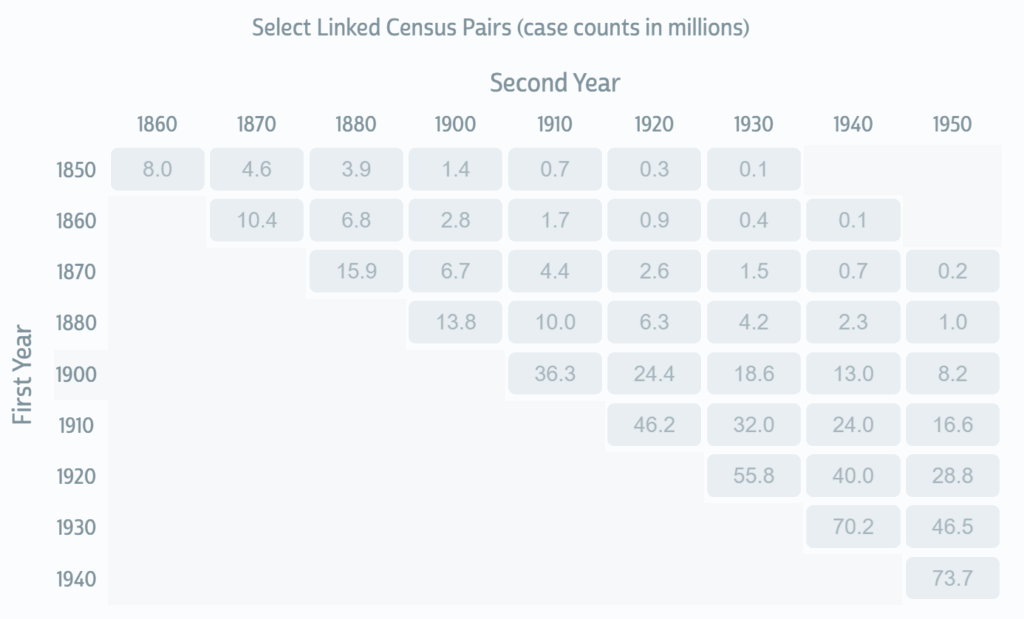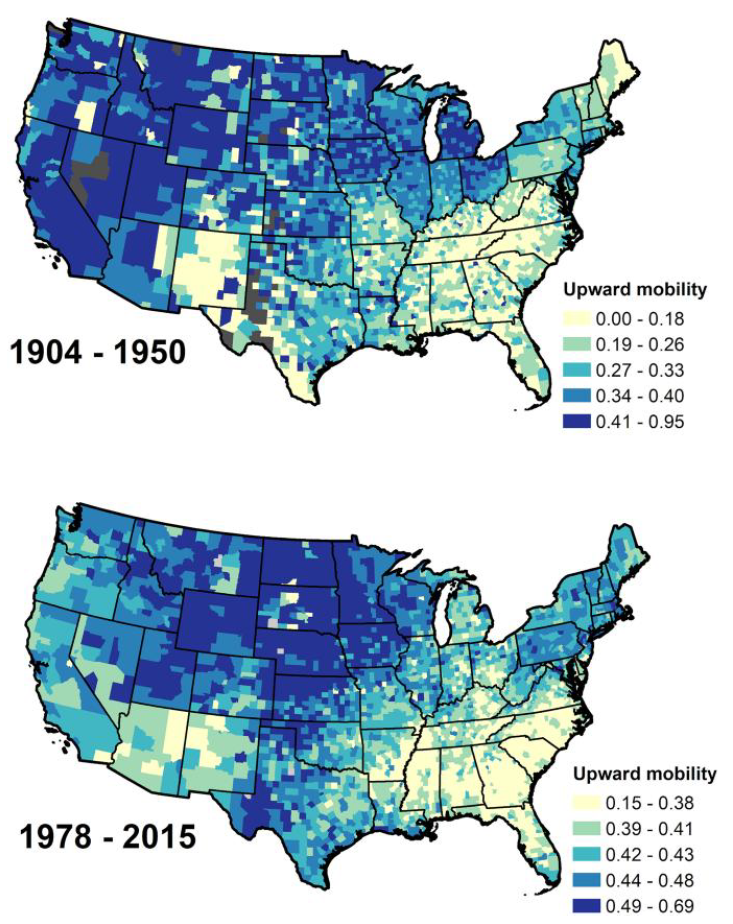By Etienne Breton
As researchers, we often ask questions we cannot answer due to lack of data. More intriguingly, however, there are questions we only think of asking once we encounter data that may answer them. Good data address existing problems; great data inspire new questions. The latest iteration of the IPUMS Multigenerational Longitudinal Panel (MLP) project, which links together records from the full count US census data, fits this description. Visit our data browser and project description for inspiration on research questions you did not know could be asked – and answered.
Full count census data offer unprecedented opportunities for social scientific research. Once harmonized, these data enable precise measurement of key demographic, economic, and social patterns across time and space. Researchers can observe entire populations over long periods and produce estimates virtually free of sampling error. Estimates can also be produced down to the smallest geographical units, allowing researchers to define and observe communities with an outstanding level of detail.
Perhaps even more powerfully, full count data have opened the possibility of automated record linkages across census years to construct millions of individual life histories and trace millions of families over multiple generations. These linked data speak compellingly to core research questions in the social sciences, including intergenerational mobility and the intergenerational transmission of socioeconomic characteristics; exhaustive descriptions of individual and family trajectories; internal migration patterns within small geographic units; long-term outcomes of early-life conditions; and many more.
IPUMS disseminates full count census enumerations for ten census years from 1850 to 1950. These data, covering over 800 million individual records, are the fruit of collaboration between IPUMS and the world’s two largest genealogical organizations — Ancestry.com and FamilySearch — to leverage genealogical data for scientific purposes. IPUMS MLP now offers longitudinal links between individuals and households enumerated in those ten censuses. As shown in the figure below, we offer 645 million links between census pairs in MLP’s current iteration. This amounts to more than 175 million people linked over two or more censuses.
Figure 1: Case Counts for Linked Census Pairs

Full count and linked census data can further be merged with datasets outside the census, including administrative data and surveys from the present day, to multiply research opportunities. Already researchers have been drawing on these new data to tackle ambitious questions. This includes studies on the life-course impacts of New Deal policies on individual wellbeing and economic outcomes; on the role of declining kin availability on birth rates; on the late-life consequences of early-life exposure to lead; on the intergenerational mobility of immigrants over the long run; and many other studies.
Figure 2. Intergenerational mobility in the US from Connor et al. (2025)

We have only scratched the surface of the potential of full count and linked census data. These data provide a fertile ground for formulating new and original research questions. They allow revisiting more foundational research questions, which can now be answered with added depth, granularity and exhaustiveness. The field of publication opportunities using these data remains wide open. Studies published in major journals already attest to the data’s significance for scholarly contributions. In both academic and applied research settings, there is also great demand and momentum for improving the methods – chiefly machine learning models – needed to create these data.
If any of these possibilities piques your curiosity, consider yourself cordially invited to visit the IPUMS USA website for more information on full count census data, as well as the MLP project page for more information on the latest updates to MLP data and for the project’s next steps.
